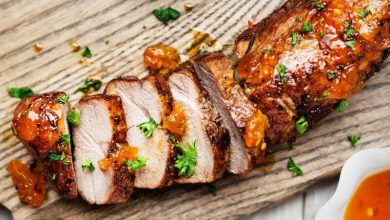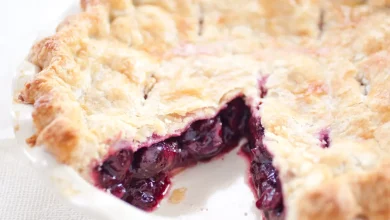🍽️ An Enjoyable Stuffing: A Flavorful Delight 🍗
Ah, stuffing, the delicious side dish that often steals the show at holiday feasts and gatherings. It’s more than just bread and seasonings; it’s a comforting and flavorful addition to any meal. Let’s dive into the history, components, preparation steps, and cooking time for this delightful dish! 🦃
📜 History of Stuffing:
Stuffing, also known as dressing in some regions, has a rich culinary history. It can be traced back to ancient civilizations like the Romans, who used a mixture of ingredients such as vegetables, nuts, and spices to stuff poultry. In medieval Europe, stuffing became a staple of feasts, evolving over time to include ingredients like bread and herbs. Today, it’s enjoyed in various forms around the world, often associated with holiday celebrations.
🧵 Components of Stuffing:
The components of stuffing can vary widely based on regional and personal preferences. However, a traditional stuffing typically consists of the following key ingredients:
- Bread: Usually cubed or crumbled, bread forms the base of the stuffing. Common types include white, wheat, or cornbread.
- Seasonings: Herbs like sage, thyme, and rosemary add aromatic flavors. Salt, pepper, and sometimes garlic and onions are also used.
- Liquid: Broth, stock, or melted butter is added to moisten the mixture.
- Additional Ingredients: This is where creativity comes into play! Many recipes incorporate ingredients like celery, onions, sausage, mushrooms, nuts, dried fruits, and even apples for a sweet twist.
👩🍳 Steps to Prepare Stuffing:
Here’s a step-by-step guide to crafting a delicious stuffing:
- Prep Ingredients: Gather and chop your chosen ingredients, like bread, vegetables, herbs, and other additions.
- Sauté Vegetables: In a skillet, sauté onions, celery, and any other desired vegetables in butter or oil until they soften and become fragrant.
- Seasoning: Mix your chosen herbs and seasonings into the sautéed vegetables.
- Bread Base: Place the bread cubes or crumbles in a large mixing bowl.
- Combine: Pour the seasoned vegetable mixture over the bread. Add in any extras like sausage or dried fruits.
- Moisten: Gradually pour in warm broth or melted butter, tossing everything to ensure even moisture distribution. The amount depends on your desired consistency.
- Bake: Transfer the mixture to a baking dish and cover it with foil. Bake at 350°F (175°C) for about 30 minutes, then uncover and bake for an additional 15-20 minutes to achieve a golden crust.
⏲️ Cooking Time:
The time needed to prepare stuffing depends on the recipe and the quantity you’re making. However, on average, it takes around 45 minutes to 1 hour from prep to finish. Keep in mind that this can vary based on factors like your oven’s temperature and the type of bread you use. Be sure to check for doneness, aiming for a crispy, golden top.
In conclusion, stuffing is a versatile and beloved dish with a fascinating history. Its components and preparation methods can be customized to suit your taste, making it a delightful addition to any festive meal. Enjoy your culinary journey as you create a memorable and enjoyable stuffing! 🍽️🦃😊
Certainly! Here are the nutrition facts and some health information for a typical serving of stuffing:
Nutrition Facts (per 1 cup serving of traditional stuffing):
- Calories: Approximately 200-350 kcal (varies based on ingredients and portion size)
- Total Fat: 8-15 grams
- Saturated Fat: 2-4 grams
- Cholesterol: 15-30 milligrams
- Sodium: 400-700 milligrams
- Total Carbohydrates: 30-40 grams
- Dietary Fiber: 2-4 grams
- Sugars: 2-4 grams
- Protein: 5-10 grams
Health Information:
-
Caloric Content: Stuffing can be relatively high in calories, mainly due to the bread and added fats. It’s essential to be mindful of portion sizes, especially during holiday feasts.
-
Fat Content: While stuffing contains fat from ingredients like butter or oil, it’s not excessively high. However, if you’re watching your fat intake, consider using less butter or opting for a lower-fat recipe.
-
Sodium: Some stuffing recipes can be relatively high in sodium, primarily if commercial broths or stocks are used. You can reduce sodium by using low-sodium broth or making your own broth from scratch.
-
Fiber: Depending on the type of bread and additional ingredients used, stuffing can provide a moderate amount of dietary fiber. Whole-grain bread and added vegetables can increase fiber content, which is beneficial for digestion.
-
Protein: While not a significant source of protein, stuffing does provide a small amount. If you’re looking to increase protein intake, consider adding ingredients like nuts or sausage.
-
Vitamins and Minerals: The presence of vegetables, herbs, and whole-grain bread can contribute essential vitamins and minerals like vitamins A and C, folate, and various B vitamins.
-
Portion Control: As with many holiday dishes, moderation is key. Enjoy stuffing as part of a balanced meal, and be mindful of overall calorie intake during special occasions.
Remember that the exact nutritional content can vary based on the specific recipe and ingredients used. To get precise nutrition facts, it’s advisable to calculate them using the exact ingredients and serving sizes you plan to use.




